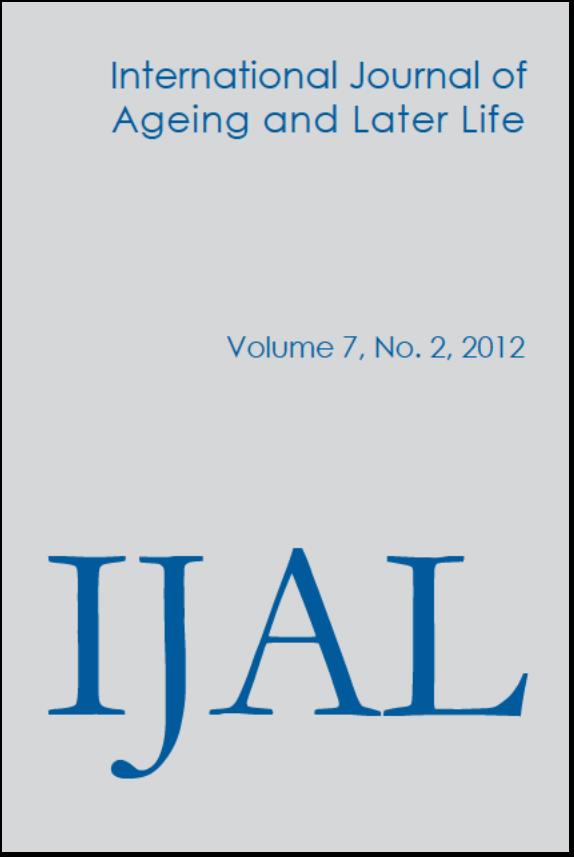Reimagining care: images of aging and creativity in House Calls and Year at Sherbrooke
Main Article Content
Abstract
This article looks at the relationship between the esthetic and documentary commentaries offered by two National Film Board of Canada (NFB) productions, chosen because they use the documentary form to interpret aging and care in Canada for Canadians, offering a Canadian example of an issue that is of international importance. The first film, House Calls (Ian McLeod 2004), follows the work of Mark Nowaczynski, a physician who photographs his elderly patients to illustrate their dignity amidst what he perceives to be their fragility and vulnerability. The second, A Year at Sherbrooke (Thomas Hale 2009), follows artists Thelma Pepper and Jeff Nachtigall who work with residents of a Saskatoon long-term care facility - Pepper continues her longer term practice of photographing the residents and Nachtigall takes on a new role of artist-in-residence in which he mentors them in their own creative development. Analyzing the role of photography in each film, the article shows that, together, the films demonstrate that images of aging beyond mere decline may play a role in reimagining how care for older adults takes place.
Metrics
Article Details

This work is licensed under a Creative Commons Attribution-NonCommercial 3.0 Unported License.
Since 2020 the International Journal of Ageing and Later Life uses a Creative Commons: Attribution license, which allows users to distribute the work and to reform or build upon it without the author's permission. Full reference to the author must be given.
References
Beattie, K. (2004). Documentary Screens: Non-Fiction Film and Television. New York, NY: Palgrave Macmillan.
Biggs, S. (2001). Toward critical narrativity. Journal of Aging Studies 15: 1–14. DOI: 10.1016/S0890-4065(01)00025-1
Burke, L. (2007). The poetry of dementia: Art, ethics, and Alzheimers disease in Tony Harrisons Black Daisies for the bride. Journal of Literary Disability 1(1): 1–14.
Department of Justice (1985). National Film Act. Statutes of Canada C n-8.
Ellis, J. C. & McLane, B. A. (2005). A New History of Documentary Film. London: Continuum International Publishing Group.
Gilleard, C. & Higgs, P. (2011). Frailty, disability and old age: A reappraisal. Health: An Interdisciplinary Journal for the Social Study of Health, Illness and Medicine 15(5): 475–490. DOI: 10.1177/1363459310383595 PMid:21169203
Grenier, A. & Hanley, J. (2007). Older women and frailty: Aged, gendered and embodied resistance. Current Sociology 55(2): 211–228. DOI: 10.1177/0011392107073303
Grierson, J. (1932). The documentary producer. Cinema Quarterly 2(1): 8.
Grierson, J. (1979). First principles of documentary. In F. Hardy (ed.), Grierson on Documentary (pp. 35–46). London: Faber and Faber Limited.
Katz, S. (1996). Disciplining Old Age: The Transformation of Gerontological Knowledge. Charlottesville, VA: University Press of Virginia.
Leach, J. & Sloniowski, J. (2003). Introduction. In J. Leach & J. Sloniowski (eds.), Candid Eyes: Essays on Canadian documentaries (pp. 3–12). Toronto: University of Toronto Press.
Mitchell, W. J. T. (1984). What is an image? New Literary History 15(3): 503–537. DOI: 10.2307/468718
Nichols, B. (1991). Representing reality. Bloomington. IN: Indiana University Press.
Ray, R. E. (2008). Coming of age in critical gerontology. Journal of Aging Studies 22(2): 97–100. DOI: 10.1016/j.jaging.2007.12.001
ROM (2010). House calls with my camera: Social documentary portraits by Dr. Mark Nowaczynski. Royal Ontario Museum. Available on http://www.rom.on.ca/news/releases/public.php?mediakey=wyau2s01zp (Accessed: August 20, 2012).
Turcotte, M. & Schellenberg, G. (2006). A Portrait of Seniors in Canada. Ottawa: Statistics Canada.
Twigg, J. (2004). The body, gender, and age: Feminist insights in social gerontology. Journal of Aging Studies 18(1): 59–73. DOI: 10.1016/j.jaging.2003.09.001
Zeilig, H. (2011). The critical use of narrative and literature in gerontology. International Journal of Ageing and Later Life 6(2): 7–37. DOI: 10.3384/ijal.1652-8670.11627





